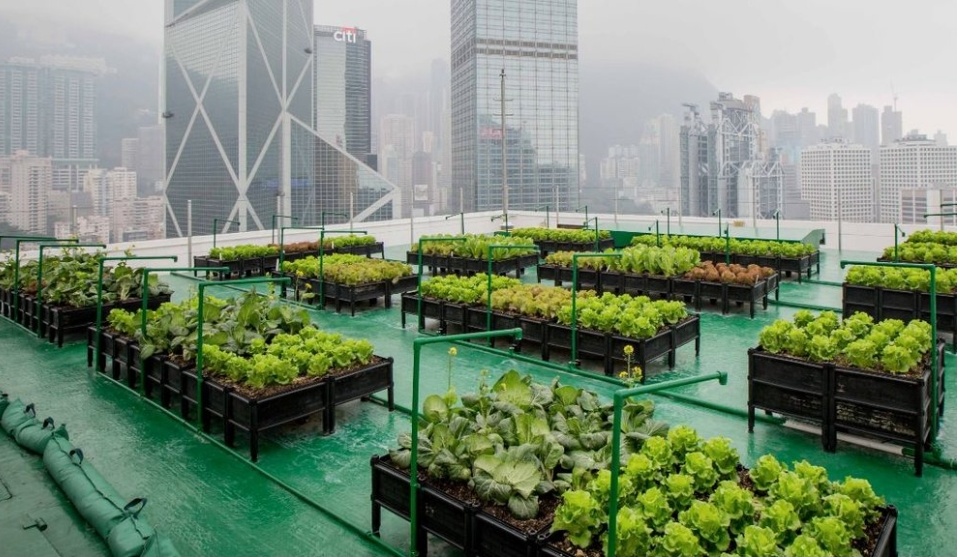As the global population continues to grow, urbanization accelerates, and traditional agricultural practices face challenges from climate change, the concept of vertical farming has emerged as a promising solution to address the increasing demand for food in a sustainable and efficient manner. This article explores the innovative world of vertical farming, examining its principles, benefits, challenges, and its potential to revolutionize the future of agriculture.
What is Vertical Farming?
Vertical farming is a groundbreaking agricultural method that involves growing crops in vertically stacked layers, often in controlled environments such as skyscrapers, shipping containers, or warehouses. This approach utilizes advanced technologies such as hydroponics, aeroponics, and LED lighting to cultivate crops without the need for soil or natural sunlight. Vertical farms aim to maximize space, conserve resources, and reduce the environmental footprint associated with traditional farming practices.
The Benefits of Vertical Farming
Vertical farming is a resource efficient method since it optimizes land use by stacking growing layers vertically, allowing for higher crop yields in smaller spaces. This method requires significantly less land than traditional farming, conserving valuable agricultural space and mitigating deforestation.
Moreover, hydroponic and aeroponic systems used in vertical farms allow for precise control of water usage reducing the water consume. These closed-loop systems recirculate water, drastically reducing the amount required compared to traditional irrigation methods. Vertical farms can use up to 90% less water than conventional agriculture.
In addition, controlled environment agriculture in vertical farms enables year-round crop production, unaffected by seasonal variations. This consistency ensures a continuous and reliable food supply, reducing dependence on specific growing seasons and climate conditions.
Another benefit of this method is that closed, controlled environments limit exposure to pests and diseases, reducing the need for chemical pesticides. Integrated pest management techniques can be employed, creating healthier and safer produce for consumers.
Finally, vertical farms can be situated in urban areas, bringing food production closer to consumers. This localized approach reduces transportation distances, lowering carbon emissions associated with food distribution and contributing to the development of more sustainable, resilient food systems.
Challenges and Considerations
Concerning vertical farming, it is also important to consider the its challenges.
Setting up a vertical farm involves significant upfront costs for infrastructure, technology, and energy-efficient systems. However, as the industry matures and technology becomes more widespread, these costs are expected to decrease.
Additionally, vertical farms rely on artificial lighting, heating, and cooling systems to create optimal growing conditions. While advancements in energy-efficient technologies are ongoing, addressing the energy consumption of vertical farms remains a key challenge for achieving true sustainability.
To also take into consideration is the fact that certain crops are better suited for vertical farming than others. Leafy greens, herbs, and some fruits are commonly cultivated, while staple crops like grains or large-rooted vegetables pose challenges. Diversifying the range of crops grown in vertical farms is an area for ongoing research and development.
Last but not least, vertical farms must address the issue of waste generated by nutrient solutions and plant residues. Developing closed-loop systems for nutrient recycling and efficient waste management practices is crucial to minimizing environmental impact.
Success Stories and Real-world Applications
AeroFarms (Newark, New Jersey)
AeroFarms is a vertical farming company that utilizes aeroponic systems to grow leafy greens in a controlled indoor environment. Their Newark facility is one of the world’s largest vertical farms, producing nutrient-dense crops with minimal environmental impact.
Infarm (Global)
Infarm, a Berlin-based startup, has developed modular vertical farming units that can be installed in supermarkets, restaurants, and distribution centers. These “in-store farms” provide consumers with ultra-fresh produce, reduce transportation emissions, and contribute to sustainable food sourcing.
Sky Greens (Singapore)
Singapore, with its limited land area, faces challenges in traditional agriculture. Sky Greens has pioneered vertical farming in Singapore, utilizing a patented hydraulic-driven system to rotate crops on vertical towers. This innovation allows for efficient sunlight exposure and minimal energy consumption.
Conclusion
Vertical farming represents a transformative approach to agriculture, offering a sustainable solution to feed the growing global population while addressing the challenges of climate change, resource scarcity, and urbanization. Although facing hurdles such as initial capital investment, energy consumption, and crop diversity, ongoing advancements in technology and increased industry adoption are steadily overcoming these challenges. As the world looks toward a future where agriculture must be both productive and sustainable, vertical farming stands as a beacon of innovation, cultivating a path towards a more resilient and environmentally conscious food system.

